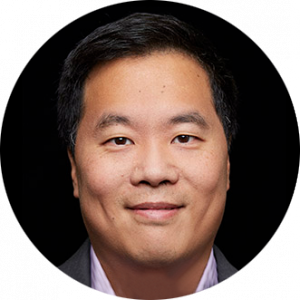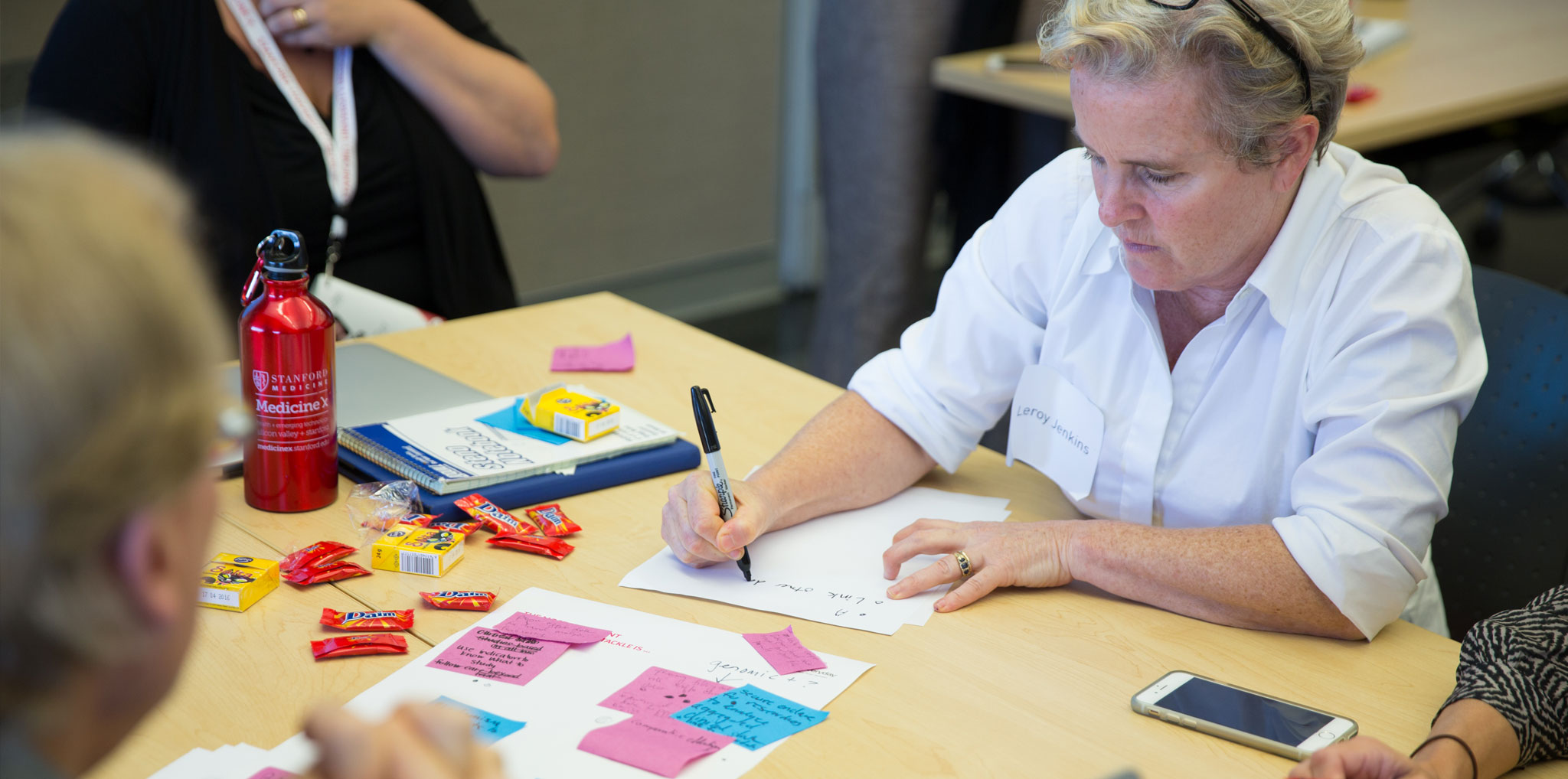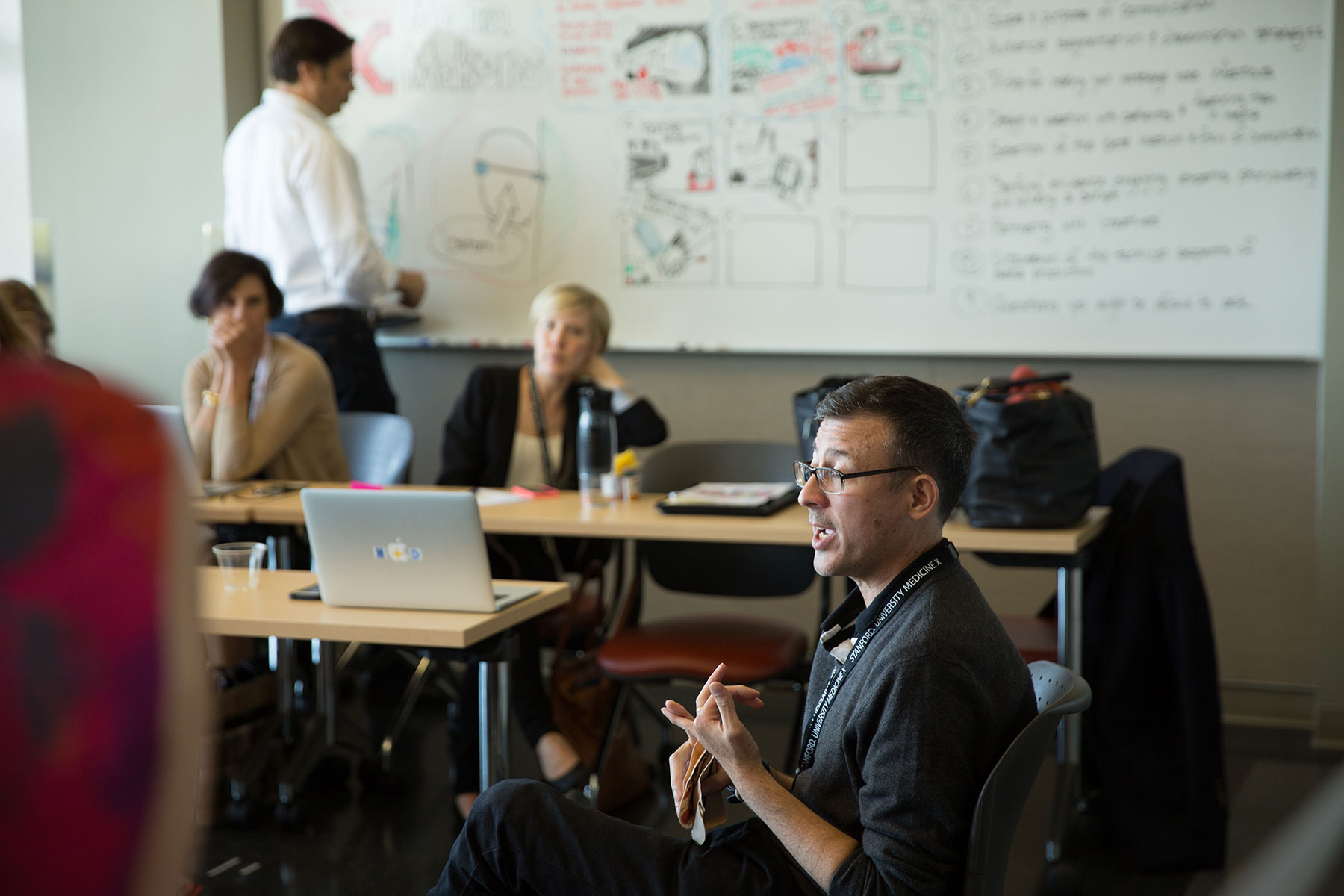everyone included™ is at the heart of precision medicine
a bold white house initiative to improve health and treat disease

Precision Medicine depends upon Everyone Included™
 Last January President Obama announced a bold new initiative to revolutionize how to improve health and treat disease. Known as the Precision Medicine Initiative, it imagines a future where treatment and prevention strategies will be tailored to individual people based on their unique genes, microbiome, health histories, lifestyles and diet.
Last January President Obama announced a bold new initiative to revolutionize how to improve health and treat disease. Known as the Precision Medicine Initiative, it imagines a future where treatment and prevention strategies will be tailored to individual people based on their unique genes, microbiome, health histories, lifestyles and diet.
At the center of this groundbreaking effort is a unique public-private-patient partnership that represents the best ideas of Everyone Included™ as a driver of healthcare transformation. In order for this initiative to be successful, those involved must develop trust in one another’s aims, respect for one another’s expertise, and empathy for one another’s views, as freely-shared health data is a remarkable resource with which we will shape a healthy future for everyone.
We’ve assembled this page as a central reference point for resources about President Obama’s Precision Medicine Initiative and work that has been presented and developed at Medicine X in support of this important public health initiative.
Nick Dawson, Executive Director of the Johns Hopkins Sibley Innovation Hub, and Claudia Williams, are two members of our Medicine X community that have led the way in bringing this important work to our Everyone Included™ community and our stage. I’m so happy we can share the exciting developments in precision medicine and the role our Medicine X community members are playing in shaping this important initiative.
We hope you find these resources valuable.
Sincerely,

Larry Chu, MD
Executive Director, Stanford Medicine X
About Stanford Medicine X and Everyone Included™
Medicine X is Stanford University’s premier health care innovation program focusing on the intersection of emerging technologies and medicine. Our initiative is a catalyst for new ideas, and explores how we can work together to advance the practice of medicine, implement new approaches to healthcare such as precision medicine, and empower all stakeholders to be active participants in discussions about the future of health care. Under the direction of Dr. Larry Chu, Associate Professor of Anesthesia at Stanford School of Medicine, and guided by the Everyone Included™ framework for co-creation and leadership, Medicine X is a project of the Stanford AIM Lab and a growing international community.
ABOUT EVERYONE INCLUDED
Everyone Included™ is a framework for health care innovation, implementation and transformation based on principles of mutual respect and inclusivity. It is the culmination of six years of co-creation with patients, caregivers, providers, technologists, and researchers at Stanford Medicine X that has resulted in a series of design and leadership principles intended to drive collaborative health care innovation efforts. Our work has been field tested and iteratively improved over the past six years at our Stanford programs and convenings worldwide.
the voice of patients
patient stories underscore the need for precision medicine
Saving your life with medical "selfies"
Medicine X ePatient Scholar Steven Keating talks about how his natural curiosity about his own medical data ended up saving his life and explores if medical “selfies” might be the answer we’re all looking for.
A rare mutation, short on time
Medicine X ePatient Advisory Board member Emily Kramer-Golinkoff discusses how patients and their families can “hack the system” to infuse health care with an urgency, laser focus and humanity that can help us all dream big by starting small.
Finding his son's killer
Medicine X ePatient Scholar Matthew Might shares the story of how his son was diagnosed as the “first and only” patient with a novel rare disease, and why precision medicine is so important.
a call to action
claudia williams explains precision medicine as a call to action for everyone
different perspectives, shared goals
"brca"-ctivist andrea downing moderates a panel discussion of diverse stakeholders
co-designing with everyone included™
a diverse group of patients, researchers, providers and technologists working together

Co-designing precision medicine with everyone included™
 Medicine X had an extraordinary opportunity in September 2015 to pursue a MedX first: co-creation in large numbers together during the event. We explored the idea of patient-inclusive research. Work began a few weeks before the conference in the form of a pre-conference survey. As I note in my talk, the remarkable thing about this opportunity at Medicine X was to pursue co-design with our Everyone Included™ model. Only at MedX do we get patients, caregivers, designers, providers and researchers all in the same room on equal footing.
Medicine X had an extraordinary opportunity in September 2015 to pursue a MedX first: co-creation in large numbers together during the event. We explored the idea of patient-inclusive research. Work began a few weeks before the conference in the form of a pre-conference survey. As I note in my talk, the remarkable thing about this opportunity at Medicine X was to pursue co-design with our Everyone Included™ model. Only at MedX do we get patients, caregivers, designers, providers and researchers all in the same room on equal footing.
We had over 60 contributions to our survey and completed over 12 direct interviews with conferees during Medicine X. We took those findings and brought a diverse group of Everyone Included™ stakeholders to synthesize and design for two and a half hours to distill our thoughts into a concise set of principles to guide future precision medicine research efforts.
eight principles for precision medicine research
nick dawson and claudia williams describe how precision medicine might engage participants as partners
Everyone Included™ research...
#1: Honors and includes all members as full partners in a team
Claudia Williams points out that originally, this principle was worded as “includes all patients” as full partners in a team. However, through the design process the team realized research needs to honor and respect all members of a team–patients as well as non-patients. Williams points out that research only works “when everyone is included”.
#2: Is open source
Methods and data and purpose are shared in Everyone Included™ research. Open source allows and encourages sharing and collaboration so there is a feedback loop between data and results.
#3: Helps patients make decisions
Everyone Included™ research puts results in context for patients, not abstract terms. Patients and their families should be able to use research information to help make decisions about their health treatment.
#4: Also benefits researchers
Researchers seek to understand mechanistic and scientific phenomena related to answering questions–they should continue to glean these benefits from research while ensuring patients benefit at well. How might we “watch the game and see the marching band” at the same time?
#5: Is proactively designed for inclusion
Claudia Williams notes, “History hasn’t shown us how to do this. Nobody should be left out of the equation.” Medicine X and our Everyone Included™ co-creation and leadership model gives design principles for inclusivity as well as six leadership principles to help lead diverse teams.
#6: Evolves as researchers and patients learn together
Patients and researchers should learn together. We need to find a way to iterate within studies and over time. As diverse stakeholders learn from each other, that wisdom should be synthesized to help further refine and drive research innovations.
#7: Is funded based on patient priorities
Research should also work on problems that matter most to patients and their families. Williams notes this means that we should “make core decisions based upon what’s important to patients”. She notes that patients with Parkinson’s are more concerned about fatigue and GI problems than tremors.
#8: Is well-designed
Williams challenges us to focus on creating optimal research process, experience, and simplicity. She notes that we can have complex goals, but the experience has to be “beautiful, seemless, and elegant”.





